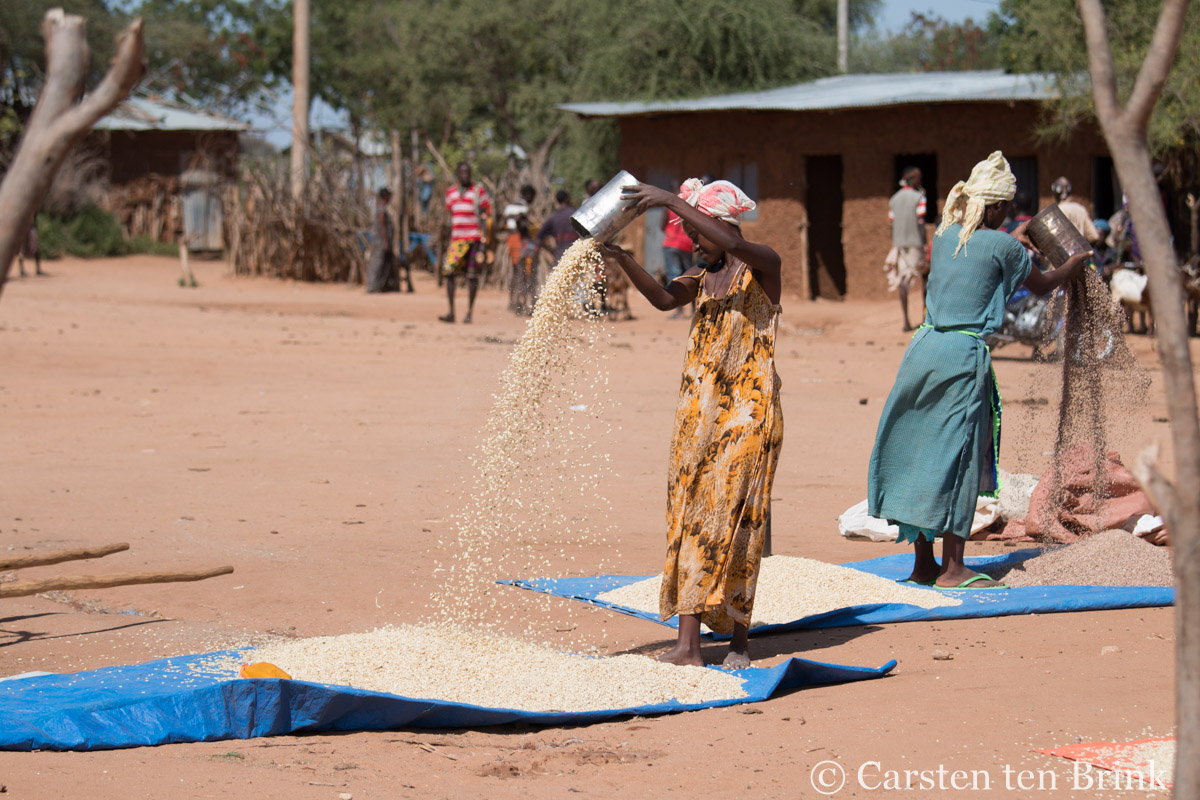The political economy of rice value chain in Ethiopia: actors, performance, and discourses

Written by Dawit Alemu and Abebaw Assaye
This blog summarises APRA Working Paper 51, which shows the importance of rice in Ethiopia since its introduction the 1970s covering trends in terms of actors engaged, domestic consumption and policy attention. The authors identify the key challenges that have contributed to the poor performance of Ethiopia’s rice sector, along with suggestions on how to promote its commercialisation. They also look at how COVID-19 has affected the sector.
Motives of rice sector development
The motive of rice introduction to Ethiopia and its promotion was the government’s initiative to ensure food security and the settlement programmes during the Derg regime, which has evolved in recent years into the agenda of ensuring self-sufficiency linked with ever-increasing rice imports, which is adding a burden on the already meagre foreign currency reserves.
Key actors of the rice value chain
- The Ethiopia’s research system: with the support of the International Rice Research Institute (IRRI) and AfricaRice, as well as technical and financial support from development partners, mainly the Japan International Cooperation Agency (JICA), the national research system has managed to release 37 improved varieties of rice seed, along with recommended production practices. However, the availability of other rice related technologies is very limited.
- Rice producers: rice production is dominated by smallholder farmers and the use of quality seed of the released varieties is very low due to limited participation of actors engaged in certified seed production. On gender, smallholder female farmers have, on average, less in terms of household labour and land allocated for rice production. The average rice productivity levels achieved by female-headed households is also, on average, smaller than male-headed households.
- Rice processors: who work closely with rural collectors and farmer traders, processors play a crucial role in marketing both paddy and milled rice, in addition to the processing services and job creation they provide. The major challenges facing processors are the poor quality and inadequacy of paddy supply, the instability of electricity supply, and the lack of price incentives for quality rice products.
- Labourers: The commercialisation of rice has contributed to the emergence of rural labour and land markets. 52 per cent of smallholder rice farmers use hired labour to meet their demand. The same is true for rice processors as, on average, a processor hires six casual labourers.
COVID-19 and its impact on rice value chain
The impact of COVID-19 has been associated with the responses of the different value chain actors to the measures put in place by the Ethiopian government, and governments of other countries from which Ethiopia imports rice, mainly India and Pakistan and, to some extent, Vietnam. Accordingly, our assessment indicates that (i) farmers’ rice production processes were not affected – rather, they have seen higher prices; (ii) rice processors have limited their processing service provision. Instead, processors have been purchasing paddy and storing it in private storehouses as paddy rice, waiting for higher prices; and (iii) consumers are negatively affected due to higher domestic prices.
Discourses around rice value chain development
Recognising the strategic importance of rice and increasing challenges due to the COVID-19 pandemic, the Ministry of Agriculture (MoA) has designed intervention options to boost domestic production and productivity. These include the expansion of rice production in the lowlands of the country, where there is huge potential for irrigated agriculture. In this regard, the key areas currently debated are (i) how to enhance the role of smallholder rice farmers and commercial farms without destructive competition; (ii) how to modernise the rice processing industry to ensure competitiveness with imported rice; (iii) how to boost the contribution of the rice industry in the creation of job opportunities and women’s empowerment; (iv) how to generate reliable national rice statistics for improved strategic decision making, mainly in relation to rice production, the area cultivated for rice, and the productivity achieved; and (v) how to ensure rice import substitutions.
Conclusion
We conclude that the poor performance of the rice value chain along with the emerging/dynamic challenges facing the sector need specific attention from policymakers and development partners. Initiatives need to boost domestic production and productivity in a manner that capitalises not only on the existing agricultural potential, but also on taking advantage of the labour that is already available.
Feature photo credit: Carsten ten Brink on Flickr.
Please note: During this time of uncertainty caused by the COVID19 pandemic, as for many at this time, some of our APRA work may well be affected but we aim to continue to post regular blogs and news updates on agricultural policy and research.
